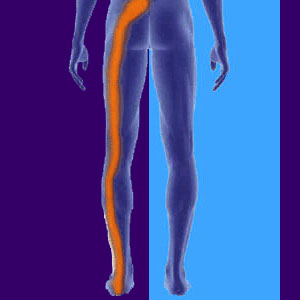
Finding relief from piriformis syndrome is the goal of a great number of lower back pain and sciatica sufferers who have been diagnosed with this controversial symptomatic theory. While the diagnostic incidence of piriformis syndrome continues to rise, the actual occurrence of the condition is quite rare. While some doctors doubt that the pain syndrome is even a real and unique valid diagnosis, I truly believe that it does exist in many patients. However, the reasons why piriformis syndrome exists is the subject of widespread debate.
This essay will help patients who have been diagnosed with piriformis syndrome, or those who suspect that they might have piriformis pain, to better understand how to find lasting symptomatic respite.
Diagnostic Relief from Piriformis Syndrome
Some doctors use piriformis syndrome as a catch-all diagnosis for many cases of non-spinally-induced lower back pain and sciatica. Typically, pronouncement of the diagnosis follows a rather unscientific process much akin to this: “We know what it is not. Therefore; it must be piriformis syndrome.” Yeah right doc, you just keep telling yourself that.
Diagnosis should always be achieved accurately and with verified conclusions. Diagnosis should not be made by exclusion or process of elimination. After all, this is called a guess, not a diagnosis.
In some patients, there is no evidence that the piriformis muscle is even involved in the painful expression. In others, there is evidence of involvement, but no link to a causative process. Remember, the piriformis muscle can be victimized by many other source reasons for pain and suffers due to an effect, not being a cause unto itself.
The piriformis muscle can suffer pain and spasms due to a variety of spinal conditions, such as pinched nerves in the lower back and even central spinal stenosis. The piriformis can also be targeted by oxygen deprivation, leading to terrible symptoms which usually defy traditional treatment.
Achieving Relief from Piriformis Pain
In some cases, the piriformis is truly involved in generating pain and this is clear from diagnostic testing and physical exam. However, in the vast majority of these circumstances, the theorized cause of pain is some sort of injury or ligament issue. This is almost never correct, although it can be in very rare scenarios.
In most instances, piriformis syndrome is enacted by regional ischemia, or a compressive lumbar neuropathy, and the expression involves far more than the piriformis muscle. In fact, most patients have demonstrable neurological deficits and widespread muscular concerns far too widespread for simple piriformis-induced pain.
Oxygen deprivation is known to typically target the postural muscles in particular, so it should be no surprise that the piriformis is just one of many structures involved in ischemic chronic pain. In less common circumstances, the piriformis might be involved in a larger scale expression caused by central stenosis in the lower back or even in another area of the spine. Remember, any stenotic change which compromises the viability of the spinal cord or cauda equina can have variable and drastic effects anywhere below the compressed vertebral levels.
Relief from Piriformis Syndrome Help
Do not rush into any ridiculous therapy plan for piriformis syndrome. Instead thoroughly research the condition and understand exactly the types of symptoms it typically produces. Compare these against your own symptomatic expression and search for inconsistencies. You are likely to find many.
I almost always advise piriformis patients to research carefully before acquiescing to the various injections and pharmaceutical pain management methods so common in the back pain treatment industry. These methods of care are symptomatic in nature and not designed to cure anything, yet they are the most often utilized for treating piriformis concerns.
If true causative piriformis syndrome does indeed exist in a patient, due to injury or sciatic nerve compression, try to stick to natural curative methods of care, such as physical therapy. If symptom relief is needed, try acupuncture or massage, as these can be highly effective for piriformis pain without any of the inherent risks of drugs or injection treatments.
Finding respite from piriformis-related pain demonstrates all the usual challenges of achieving relief from general back pain, so patients must become active in their own care and never assume passive roles in the treatment process.
Back Pain > Piriformis Syndrome > Relief from Piriformis Syndrome





